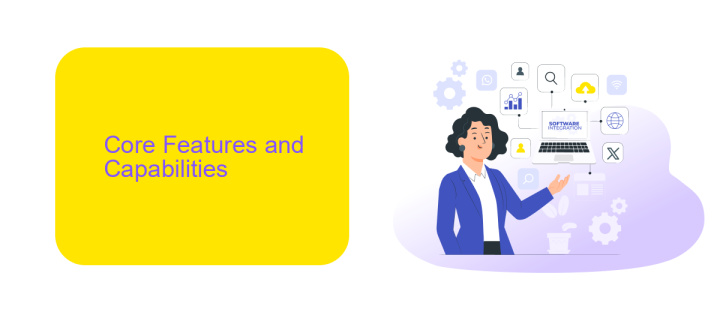Power Automate Vs UiPath Vs Blue Prism
In the rapidly evolving landscape of automation, Power Automate, UiPath, and Blue Prism stand out as leading tools for enhancing business efficiency. Each platform offers unique features and capabilities tailored to different organizational needs. This article delves into a comparative analysis of these three automation giants, exploring their strengths, weaknesses, and ideal use cases to help you make an informed decision.
Introduction and Overview
Power Automate, UiPath, and Blue Prism are three leading tools in the realm of robotic process automation (RPA). These platforms are designed to automate repetitive tasks, streamline workflows, and enhance productivity across various industries. By leveraging these tools, businesses can reduce manual effort, minimize errors, and achieve greater efficiency.
- Power Automate: A Microsoft product that integrates seamlessly with other Microsoft services and offers a user-friendly interface for creating automated workflows.
- UiPath: Known for its robust capabilities in automating complex processes, UiPath provides extensive support for both attended and unattended automation.
- Blue Prism: Offers a highly scalable and secure platform, ideal for large enterprises seeking to automate a wide range of business processes.
Each of these RPA tools has its unique strengths and use cases, making it essential for businesses to evaluate their specific needs before choosing the right solution. Additionally, services like ApiX-Drive can facilitate seamless integration between these automation tools and other business applications, further enhancing operational efficiency.
Core Features and Capabilities

Power Automate, UiPath, and Blue Prism each offer unique core features and capabilities that cater to different automation needs. Power Automate is known for its seamless integration with Microsoft products and its user-friendly interface, making it accessible for both technical and non-technical users. It supports a wide range of connectors, including third-party applications, and offers AI-driven capabilities to enhance workflow automation.
UiPath stands out for its robust robotic process automation (RPA) capabilities and extensive community support. It provides an intuitive drag-and-drop interface, advanced AI and machine learning integrations, and strong security features. Blue Prism, on the other hand, is recognized for its scalability and enterprise-grade security. It offers a highly customizable platform that supports complex processes and integrates well with various legacy systems. For seamless integration across different platforms, services like ApiX-Drive can be utilized to connect these automation tools with other applications, ensuring a smooth and efficient workflow.
Pricing and Licensing Comparison

When it comes to pricing and licensing, Power Automate, UiPath, and Blue Prism each offer distinct models to cater to different business needs. Power Automate provides a flexible pricing structure with both per-user and per-flow plans, making it accessible for small to medium-sized enterprises. UiPath, on the other hand, offers a more comprehensive licensing model that includes options for attended, unattended, and hybrid automation, which can be tailored based on the scale of your automation requirements. Blue Prism generally targets larger enterprises with its licensing model, which is based on the number of digital workers or bots deployed.
- Power Automate: Offers per-user and per-flow plans, starting from per user/month.
- UiPath: Provides attended, unattended, and hybrid automation licenses, with prices varying based on deployment scale.
- Blue Prism: Uses a digital worker-based licensing model, generally suitable for larger enterprises.
Each platform's pricing and licensing model is designed to offer flexibility and scalability. For businesses looking to integrate these automation tools with other services, platforms like ApiX-Drive can simplify the process by providing seamless integration solutions, ensuring that your automation workflows are efficiently connected and managed.
Use Cases and Industry Applicability

Power Automate, UiPath, and Blue Prism are widely utilized across various industries due to their robust automation capabilities. Power Automate is often favored in environments that heavily rely on Microsoft products, making it a go-to for streamlining workflows within the Microsoft ecosystem. UiPath excels in its user-friendly interface and extensive community support, making it suitable for businesses of all sizes seeking rapid deployment of automation solutions.
Blue Prism, known for its enterprise-grade security and scalability, is preferred by large organizations with complex automation needs. These tools are not only versatile but also adaptable to different sectors, enhancing efficiency and reducing operational costs.
- Finance: Automating invoice processing and compliance checks.
- Healthcare: Streamlining patient data management and appointment scheduling.
- Manufacturing: Enhancing supply chain management and quality control.
- Retail: Improving inventory management and customer service.
- IT: Automating software deployment and monitoring.
In addition to these specific use cases, integrating these automation tools with other services can further enhance their functionality. For instance, using ApiX-Drive, businesses can seamlessly connect various applications and automate data transfers, thereby optimizing their workflows even further. This integration capability makes these automation tools invaluable across diverse industries.
Strengths, Weaknesses, and Considerations
Power Automate excels in its seamless integration with Microsoft products, making it ideal for organizations heavily invested in the Microsoft ecosystem. However, it may lack advanced features required for complex automation tasks. UiPath stands out for its user-friendly interface and robust capabilities, suitable for both beginners and experienced professionals. Nevertheless, its cost can be prohibitive for smaller enterprises. Blue Prism offers strong security features and is highly scalable, making it a preferred choice for large organizations. On the downside, it requires significant training and has a steeper learning curve.
When considering which tool to adopt, it's crucial to evaluate your specific needs and resources. Power Automate is best for those already using Microsoft services. UiPath is versatile but may be costly. Blue Prism is powerful but demands extensive training. Additionally, integrating these tools with other services can be streamlined using platforms like ApiX-Drive, which simplifies the process of connecting various applications and automating workflows without extensive coding.
FAQ
What are the main differences between Power Automate, UiPath, and Blue Prism?
Which tool is more suitable for non-technical users?
How do these tools handle integration with other systems?
What are the licensing costs for these tools?
Can these tools be integrated with other automation services for enhanced capabilities?
Time is the most valuable resource for business today. Almost half of it is wasted on routine tasks. Your employees are constantly forced to perform monotonous tasks that are difficult to classify as important and specialized. You can leave everything as it is by hiring additional employees, or you can automate most of the business processes using the ApiX-Drive online connector to get rid of unnecessary time and money expenses once and for all. The choice is yours!

